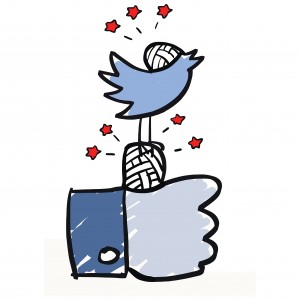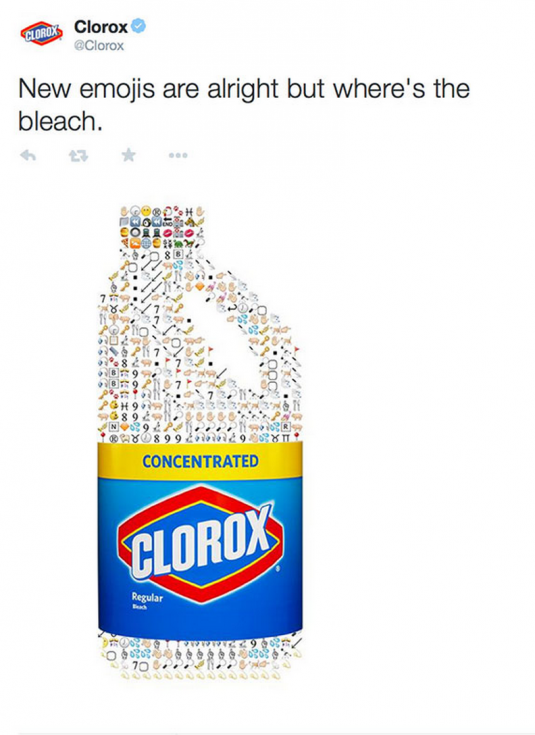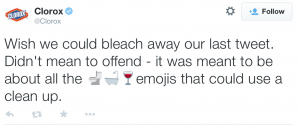What to Do When a Social Media Crisis Occurs
No  one likes handling bad press, but you never know when a crisis might strike your business. I use the word “crisis” for anything big or small that may have a negative impact on your business or its reputation. Sometimes crises can come in the form of a misspelling in a mass email or a delay in all shipping. Furthermore a “crisis” can be in real or virtual worlds. Now I know these are two different extremities, but regardless, it’s important to have a plan. A content marketer or public relations specialist may need to be prepared to respond.
one likes handling bad press, but you never know when a crisis might strike your business. I use the word “crisis” for anything big or small that may have a negative impact on your business or its reputation. Sometimes crises can come in the form of a misspelling in a mass email or a delay in all shipping. Furthermore a “crisis” can be in real or virtual worlds. Now I know these are two different extremities, but regardless, it’s important to have a plan. A content marketer or public relations specialist may need to be prepared to respond.
We have recently discussed how Jeni’s Splendid Ice Cream used social media after a real life crisis—a product recall. They acknowledged the issue, and stayed on top of their social media to respond quickly. Although Jeni’s came out okay, companies like Clorox did not have such luck. After Apple announced its release of new emojis, many of which were racially diverse, Clorox posted the photo to the left on Twitter. Many people commented and retweeted stating that Clorox was racist and insensitive. A seemingly harmless tweet by Clorox turned into a social media blunder that required an apology. Which further prompted Clorox to respond with, “Wish we could bleach away our last tweet. Didn’t mean to offend- it was meant to be about all the [toilet, bathtub and red wine] emojis that could use a clean up.”
After Apple announced its release of new emojis, many of which were racially diverse, Clorox posted the photo to the left on Twitter. Many people commented and retweeted stating that Clorox was racist and insensitive. A seemingly harmless tweet by Clorox turned into a social media blunder that required an apology. Which further prompted Clorox to respond with, “Wish we could bleach away our last tweet. Didn’t mean to offend- it was meant to be about all the [toilet, bathtub and red wine] emojis that could use a clean up.”

While social media is a great place to experiment with different marketing and advertising tactics, there are many mistakes that you can make with social media. Here are a few tips to follow if you catch your company in the middle of a social media crisis.
1. Determine the severity of the crisis.
Can it be easily fixed with an edit button? Can it be quickly deleted and retyped (grammatical errors)? Have a large number of people seen, commented or shared the post? Has the post been shared on multiple channels? Find out all the facts first.
2. Let your company know.
Make sure to inform all other pertinent employees that deal with customers of the blunder. Brief others on what happened in case they encounter non-social complaints or questions.
3. Don’t respond too quickly.
Wait until appropriate team members have been alerted and have discussed the plan of action.
4. Determine how the public is reacting.
Is the sentiment negative or positive? Maybe you made an honest mistake and the sentiment is not largely negative. There may not be a need for a full-scale plan, just appropriate responses to comments. Have other media outlets caught wind of the mistake? If so, how will you address the media?
5. Decide on the appropriate plan of action and response.
How will you respond to comments? For example, Clorox decided to delete their insensitive post and apologize. If possible, it’s best to not delete the post, but to respond and acknowledge the post.
6. Figure out the next steps.
Do you need to follow up with an apology email, press release or blog? Does it require issuing coupons or giveaways?
7. Listen up!
Remember, you will want to be very attentive during this time and keep close tabs on the chatter about your brand.
8. Learn from it.
Finally, after the storm has passed, discuss what you learned from the incident and how to avoid like blunders in the future.
If you haven’t already, it may be a good idea to create a uniform policy for dealing with social media crises. It will speed along the process and can be used as a guideline for the future. Also, keep up to date with mistakes others have made. Sometimes reading others mistakes can teach us how to not make similar mistakes. Unfortunately, I have had to handle a few crises, and it’s never fun. However, each time I learn something new from the experience. Have you handled a social media crisis before? What were some of the steps you took?
Enjoy this article? Read more from Elizabeth!
Elizabeth Muckensturm—Communications and Media Professor



